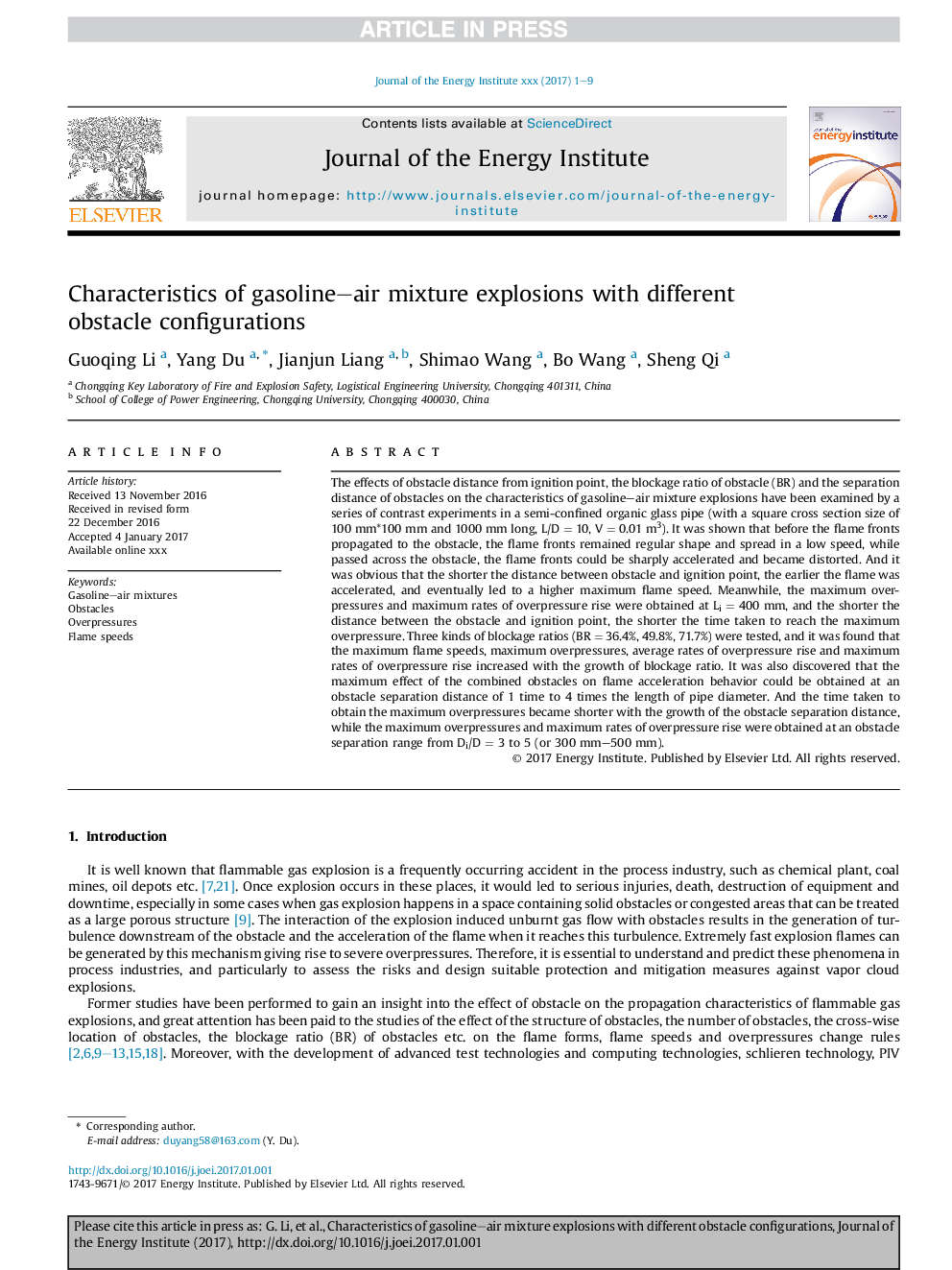| Article ID | Journal | Published Year | Pages | File Type |
|---|---|---|---|---|
| 8108624 | Journal of the Energy Institute | 2018 | 9 Pages |
Abstract
The effects of obstacle distance from ignition point, the blockage ratio of obstacle (BR) and the separation distance of obstacles on the characteristics of gasoline-air mixture explosions have been examined by a series of contrast experiments in a semi-confined organic glass pipe (with a square cross section size of 100 mm*100 mm and 1000 mm long, L/D = 10, V = 0.01 m3). It was shown that before the flame fronts propagated to the obstacle, the flame fronts remained regular shape and spread in a low speed, while passed across the obstacle, the flame fronts could be sharply accelerated and became distorted. And it was obvious that the shorter the distance between obstacle and ignition point, the earlier the flame was accelerated, and eventually led to a higher maximum flame speed. Meanwhile, the maximum overpressures and maximum rates of overpressure rise were obtained at Li = 400 mm, and the shorter the distance between the obstacle and ignition point, the shorter the time taken to reach the maximum overpressure. Three kinds of blockage ratios (BR = 36.4%, 49.8%, 71.7%) were tested, and it was found that the maximum flame speeds, maximum overpressures, average rates of overpressure rise and maximum rates of overpressure rise increased with the growth of blockage ratio. It was also discovered that the maximum effect of the combined obstacles on flame acceleration behavior could be obtained at an obstacle separation distance of 1 time to 4 times the length of pipe diameter. And the time taken to obtain the maximum overpressures became shorter with the growth of the obstacle separation distance, while the maximum overpressures and maximum rates of overpressure rise were obtained at an obstacle separation range from Di/D = 3 to 5 (or 300 mm-500 mm).
Keywords
Related Topics
Physical Sciences and Engineering
Energy
Energy Engineering and Power Technology
Authors
Guoqing Li, Yang Du, Jianjun Liang, Shimao Wang, Bo Wang, Sheng Qi,
